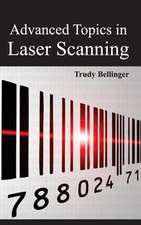Nonlinear Optics: Basic Concepts
Autor D.L. Millsen Limba Engleză Paperback – 30 iun 1998
Preț: 388.72 lei
Nou
Puncte Express: 583
Preț estimativ în valută:
74.38€ • 79.54$ • 62.02£
74.38€ • 79.54$ • 62.02£
Carte tipărită la comandă
Livrare economică 17 aprilie-01 mai
Preluare comenzi: 021 569.72.76
Specificații
ISBN-13: 9783540641827
ISBN-10: 3540641823
Pagini: 280
Ilustrații: XI, 263 p. 2 illus.
Dimensiuni: 155 x 235 x 15 mm
Greutate: 0.43 kg
Ediția:2nd, enl. ed. 1998
Editura: Springer Berlin, Heidelberg
Colecția Springer
Locul publicării:Berlin, Heidelberg, Germany
ISBN-10: 3540641823
Pagini: 280
Ilustrații: XI, 263 p. 2 illus.
Dimensiuni: 155 x 235 x 15 mm
Greutate: 0.43 kg
Ediția:2nd, enl. ed. 1998
Editura: Springer Berlin, Heidelberg
Colecția Springer
Locul publicării:Berlin, Heidelberg, Germany
Public țintă
Lower undergraduateCuprins
1. Introductory Remarks.- Problems.- 2. Linear Dielectric Response of Matter.- 2.1 Frequency Dependence of the Dielectric Tensor.- 2.2 Wave Vector Dependence of the Dielectric Tensor.- 2.3 Electromagnetic Waves in Anisotropic Dielectrics.- Problems.- 3. Nonlinear Dielectric Response of Matter.- 3.1 Frequency Variation of the Nonlinear Susceptibilities.- 3.2 Wave Vector Dependence of the Nonlinear Susceptibilities.- 3.3 Remarks on the Order of Magnitude of the Nonlinear Susceptibilities.- Problems.- 4. Basic Principles of Nonlinear Wave Interactions: Second Harmonic Generation and Four Wave Mixing.- 4.1 Perturbation Theoretic Analysis of Second-Harmonic Generation.- 4.2 Methods of Achieving the Phase Matching Condition.- 4.3 Evolution of the Second-Harmonic Wave under Phase Matched Conditions.- 4.4 Other Examples of Nonlinear Wave Interactions.- Problems.- 5. Inelastic Scattering of Light from Matter: Stimulated Raman and Brillouin Scattering.- 5.1 Quantum Theory of Raman Scattering.- 5.2 Stimulated Raman Effect.- 5.3 Contribution to Four Wave Mixing from the Raman Nonlinearity.- 5.4 Brillouin Scattering of Light.- Problems.- 6. Interaction of Atoms with Nearly Resonant Fields: Self-Induced Transparency.- 6.1 Description of the Wave Function under Near Resonant Conditions.- 6.2 Bloch Equations: Power Broadening and Saturation Effects in Absorption Spectra.- 6.3 Self-Induced Transparency.- 6.4 Area Theorem.- 6.5 Sine-Gordon Equation.- Problems.- 7. Self-Interaction Effects in One-Dimensional Wave Propagation: Solitons in Optical Fibers and in Periodic Structures.- 7.1 Normal Modes of Optical Fibers.- 7.2 Nonlinear Schrödinger Equation.- 7.3 Linear Theory of Pulse Propagation in a Dispersive Medium: Application to Optical Fibers.- 7.4 Solitons and the NonlinearSchrödinger Equation.- 7.5 Gap Solitons in Nonlinear Periodic Structures.- Problems.- 8. Nonlinear Optical Interactions at Surfaces and Interfaces.- 8.1 Second-Harmonic Generation from Surfaces; General Discussion.- 8.2 Nonlinear Optical Interactions at Surfaces and Interfaces; Examples.- 8.3 Resonant Enhancement of Electromagnetic Fields Near Surfaces and Interfaces and Their Role in Surface Nonlinear Optics.- 8.4 Experimental Studies of Surface Enhanced Nonlinear Optical Interactions.- Problems.- 9. Optical Interactions in Magnetic Materials.- 9.1 Introductory Remarks.- 9.2 Electromagnetic Wave Propagation in Ferromagnetic Materials; Faraday Rotation and the Cotton-Mouton Effect.- 9.3 Second-Harmonic Generation from Magnetic Materials; Surface Effects.- 9.4 Dynamic Response of the Magnetization and the Origin of Nonlinear Magnetooptic Interactions.- 9.5 Nonlinear Interaction of Light with Spin Waves in Ferromagnets.- Problems.- 10. Chaos.- 10.1 Duffing Oscillator: Transition to Chaos.- 10.2 Routes to Chaos.- 10.3 Experimental Observations of Chaos in Optical Systems.- Problems.- Appendix A: Structure of the Wave Vector and Frequency Dependent Dielectric Tensor.- Appendix B: Aspects of the Sine-Gordon Equation.- Appendix C: Structure of the Electromagnetic Green’s Functions.- References.
Recenzii
"Fundamental principles and experimental results make this a very complete and accessible introduction. Used either as the basic of an MSc-level course or as a reader, this book will be invaluable as an introduction to the field for beginning graduates in physics or engineering. It will also provide an excellent overview and reference work for researchers already active in the field." (Physicalia 35/1999) Anyone planning to use this book as a guide for a second- year graduate course in nonlinear optics would have to include a great deal of outside reading, or supplement it with one of the more established texts in the field (for example, Yarivs). As a note on structure, I would have appreciated a much more detailed index, and especially an author index with cross references to the subject index. Given the audience Mills is attempting to address, these additions would add greatly to its usefulness. I recommend this book to any first-year graduate student who may wish to learn about the opportunities of this exciting field. But to really learn what is going on, or what is involved in the subject, the student will need to be guided by a book that goes into greater details. RICHARD R. FREEMAN University of Californio, Dauis Physics Today, 9, 1999 This will be an extremely useful text for those wishing to enter the field of non-linear optics, provided that they already are well-versed in electromagnetic . theory and the basic tools of mathematical physics. ln short this is a book for practised theoretical (or; at least, theoretically-minded) physicists who wish to gain familiarity with the subject for interest or for research. It will also be useful as a reference for practi- cal physicists in the field, provided that it is sup- plemented with texts which provide more data from the real world. The book contains well-considered problems at the end of each chapter (but no solutions), three useful appendices, and a comprehensive reference list. A.J. Rogers King's College London, School of Physical Sciences, (Optics and Laser Technology, 31, 1999 "The text develops the basic principles that underlie nonlinear optical phenomena in matter, in an approach orientated to the general reader or student with a background in classical electromagnetic theory. ...The text is aimed at the student or researcher who is not a specialist in optics, and who wishes to acquire an introduction to the principal concepts as a precursor to the consultation of the specialized literature." P. Fleischmann, Zeitschrift für Licht und Elektronenoptik, 2000, 111, 11
Textul de pe ultima copertă
Nonlinear Optics presents the key concepts of this field, within a framework aimed at the non-specialist versed in classical electromagnetic theory. It will provide the foundation necessary for access to the specialized literature. The following topics are covered, with emphasis on the key, basic concepts: - Linear and Nonlinear Optical Response of Dispersive Media, - Nonlinear Wave Mixing, - Response of Nearly Resonant Two Systems, - Linear and Nonlinear Pulse Propagation in Fibers, - Linear and Nonlinear Surface Optics, - Basic Concepts of Magneto Opitcs, - Introduction to Chaotic Response of Systems
Caracteristici
Two new (substantive) chapters have been added, one on surface optics, and one on magneto optic phenomena.




















